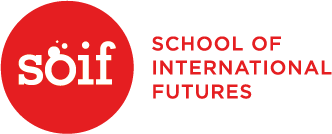I am super grateful for Giulio Quaggiotto for having pointed me in the direction of Esko Kilpi’s fantastic blog post “A pattern language of post-industrial work”
It’s definitely worth a read for anyone interested in the future of work, if you are exploring post-industrial organisational design or are generally interested in the value creation and the role of networks.
Let me share with you why I have found it so helpful.
Increasingly I describe my work within School of International Futures and FromOverHere as contributing to a social movement – one that is promoting a shift away from command and control decision-making towards system-stewardship. I see strategic foresight as central to system-stewardship and the design of effective, modern governance systems (an issue I write about in my paper for UN GCPSE on Stewardship of the Future).
In his paper, Esko describes how successful non-profit and advocacy work requires connection and collaboration. We discuss, engage, convene and riff of the great work of other organisations and collaborators – our kindred spirits. For me, these kindred spirits include among others, Involve and FDSD, Enlivening Edge, Saferworld and ASAP UK. All of whom are forging a new agenda for the future of democracy and participation. The great thing about our work is that the size of the transformation that the world needs is so large – and the field of new governance so nascent – that we are not competitors, but allies working together to create the change we want and need.
As we build this future, we will create more business opportunities and value in the system – and we can continue to cooperate to meet ever-growing needs of existing and new clients. As Esko puts it…’the most important model is a network structure where the value of all interactions is raised by all interactions; where every interaction benefits from the total number of interactions.’
I am now exploring new ways in which to learn from established networked institutions such as the New Economy Organisers (NEON) and Enspiral who connect kindred spirits and activists around the world. What defines a successful network? How can we harness different metaphors (from new social movements, Swarm Intelligence and the “Hollywood team”) to describe a set of individuals and organisations coming together to co-create value and solutions whether for governments, International organisations, cities, or communities.
I am continuously searching for new ways to approach the design and governance of networks. And for opportunities to bring together kindred spirits and organisations like SOIF in an emergent way.
If this is an issue that you care about, or have any thoughts and ideas I’d love to talk. Please get in touch by email or twitter.
Here are some of my favorite nuggets from Esko’s blog:
- Today you work more from your network than your skills
- The new structures and new designs are about communities continuously organizing themselves around shared contexts, meaning shared interests and shared practices.
- The focus of industrial management was on the division of labor and the design of vertical/horizontal communication channels. The focus should now be on cooperation and emergent interaction based on transparency, interdependence and responsiveness.
- The most inspiring and energizing future of work may be in solving problems and spotting opportunities in creative interaction with your customers.
